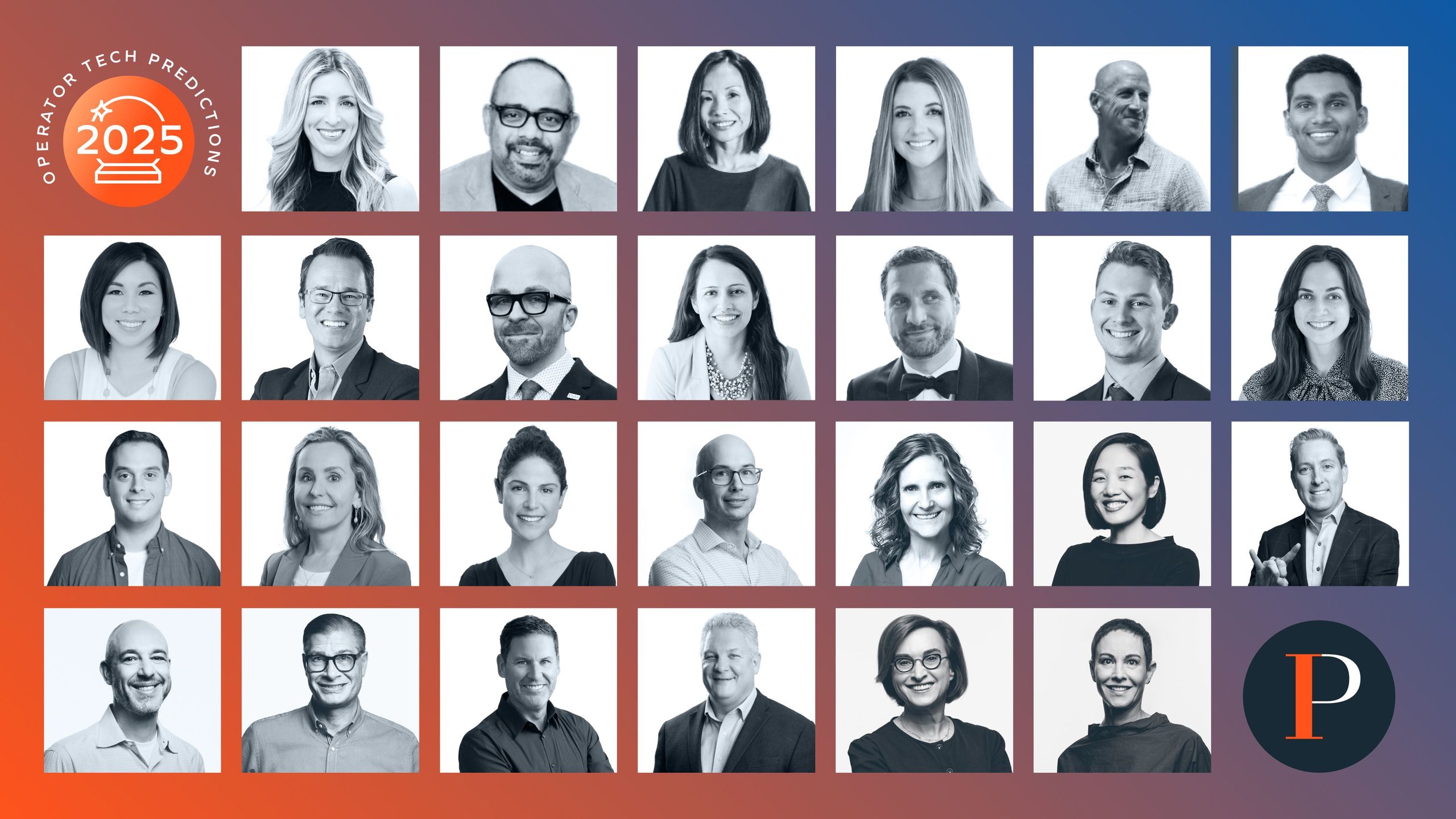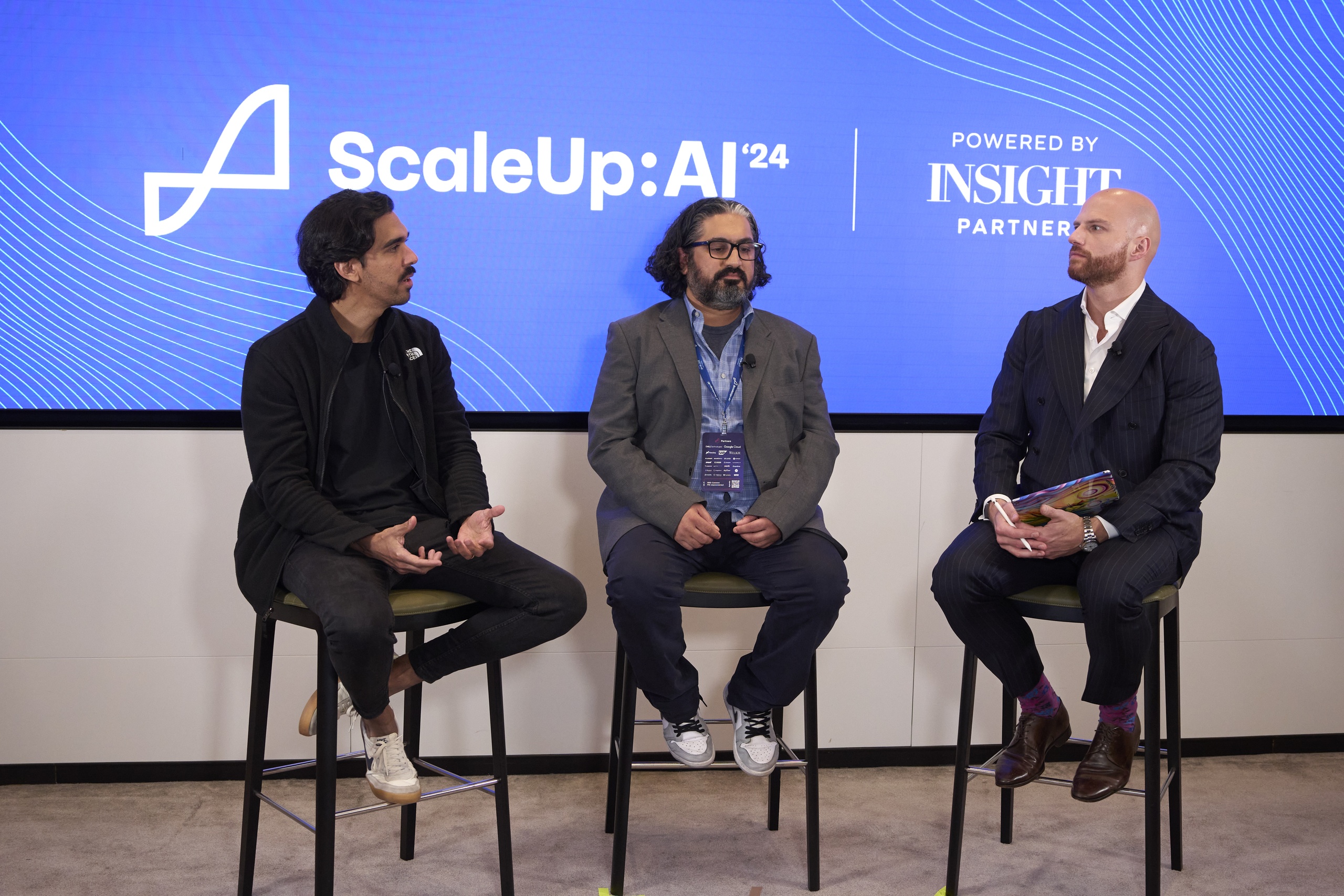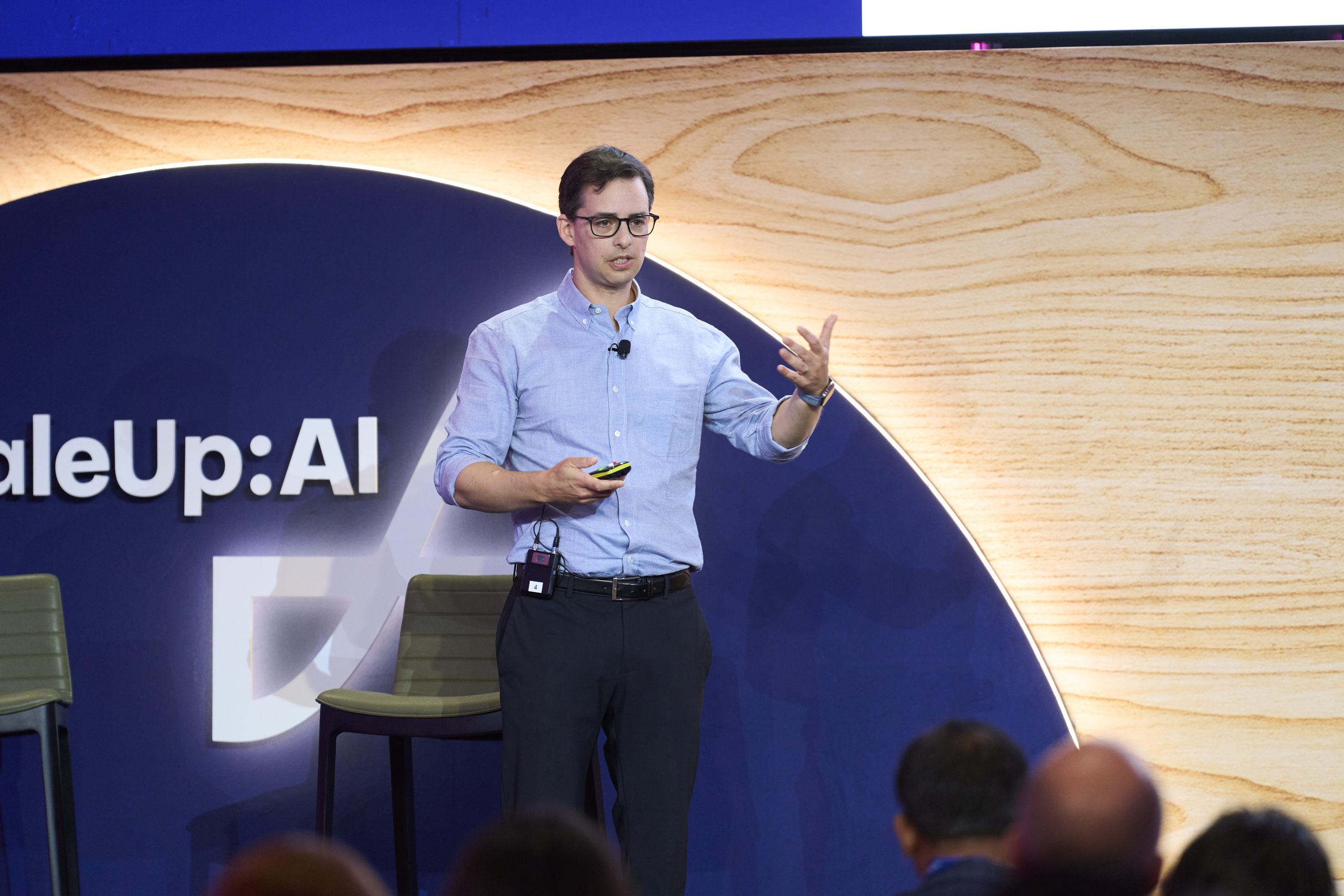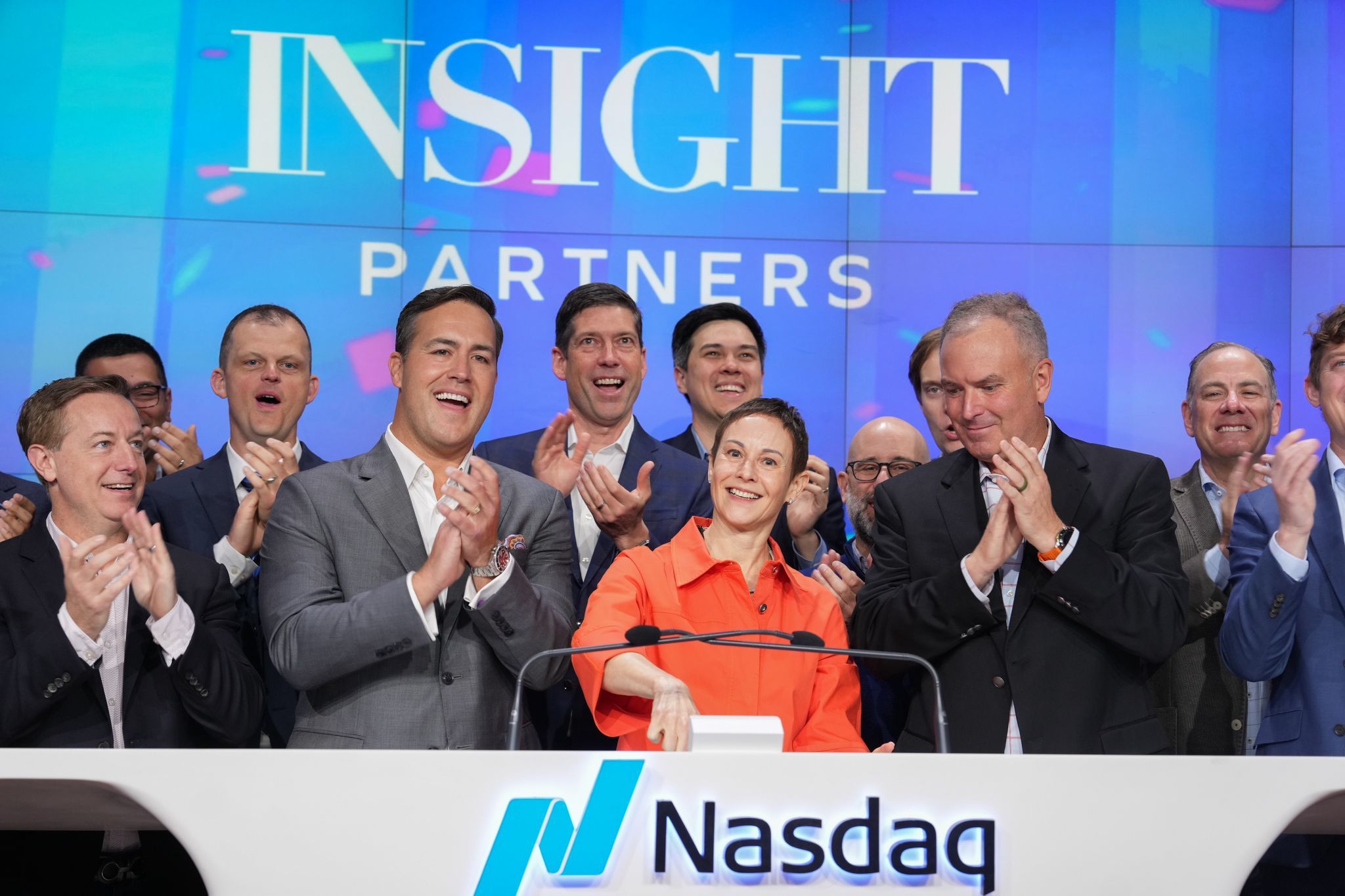AI economics, market forces, emerging roles, founder advice: 13 investors share predictions for 2025
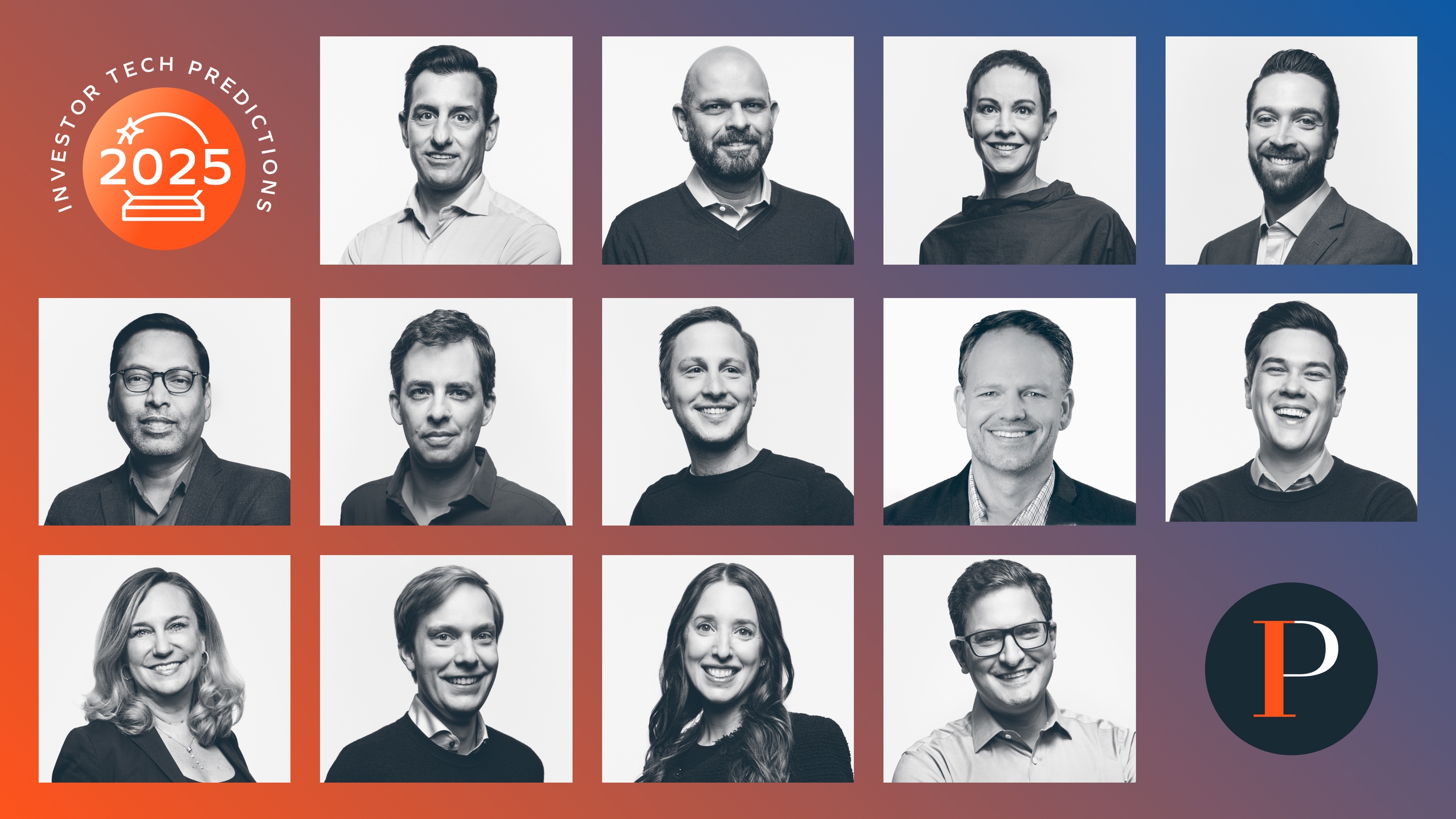
This is Insight’s third year asking some of our managing directors what their predictions are for the year ahead. It’s been a busy 2024 here at the firm — notable deal activity, a record-breaking ScaleUp:AI conference, and many, many conversations with founders.
Last year, we noted several trends in our predictions that have been proven true. 2024 was indeed a year of AI copilots — and attention has increasingly turned to AI agents. We’re still seeing a focus on AI combatting cyber attacks using AI, and we’re still very much in an “era of efficiency” where founders must balance efficiency with innovation.
Watch the webinar:
Unsurprisingly, the word “agent” appears over 20 times in this article — Insight’s most-read blog post of the year centered on our thesis on agentic AI and its promise for individuals and the enterprise. Read more about various areas of our thesis-driven investing strategies in AI, climate tech, healthcare, the next industrial revolution, and more here on the Insight blog.
You can revisit our 2023 and 2024 investor predictions in full at the links. Onward to 2025.
Generative AI will become a baseline expectation versus a competitive edge.
Years of AI hype, coupled with hefty investments from both VC and enterprises, have resulted in sky-high generative AI expectations for 2025 — both in terms of product development and realizing value.
Thomas Krane: “GenAI capabilities will be seen as a baseline expectation rather than a competitive advantage. Domain expertise and industry depth will continue to win the day. GenAI features do not lead to inherent moats and will increasingly be perceived as table stakes.”
Many investors agreed that 2025 will be a year of AI delivering measurable value.
Whit Bouck: “I think this will be the year of AI delivering true, measurable value.”
Matt Gatto: “AI maturing into a driver of measurable outcomes is one key area that stands out for me in 2025.”
Incumbents will also benefit from the expectation of incorporating generative AI into offerings, despite some challenges.

Jeff Lieberman: “2025 will likely see incumbent software vendors supercharging their offerings with AI to provide meaningful, material value to customers. The assumptions people are making about AI are changing extraordinarily rapidly. We’ll need to address infrastructure challenges for AI to truly succeed in enterprise environments.”
Teddie Wardi: “AI will enhance the best software companies…the idea that enterprise software is dying is radical.”
Proving value will require balancing rapid genAI tech developments and resulting impacts on costs and pricing.
However, AI value economics may not prove so simple.
Praveen Akkiraju: “We will take a crawl, walk, run approach to AI agent pricing models. This year, we saw significant experimentation on the economic model for AI applications, as the ecosystem worked on addressing some major questions: How do you correlate the economic value generated or costs saved with pricing strategies for incumbents and startups? Is subscription pricing truly dead and outcome-based pricing the ultimate end goal for all AI applications?
There are some obvious use cases (customer support, lead generation) that enable sustainable outcome-based pricing. In other cases where AI agents are automating complex workflows that might be bespoke to an enterprise, perhaps a “Rent-an-Agent” + platform pricing model might be more applicable.”
Hilary Gosher: “There’s a natural pricing tension for AI products and features. Should independent new features like agents carry fees, while benefits that enhance existing software without reducing the number of users be free? Some companies offer AI copilots for free as part of their EULA, whereas others will seek recompense. In 2025 we will see what buyers are willing to pay for versus what they believe should be included as part of current offerings.”

Lonne Jaffe: “The AI landscape will likely continue to see category leaders with widely-loved products incorporating generative AI features quickly. Competitive moats like product and data quality, talent adaptability, trust, distribution, and network effects will become increasingly important as switching costs erode.
GenAI could make it easier for customers to move off systems from legacy incumbents with mediocre products and high prices. Frontier models will continue to add powerful capabilities quickly, both via scaling base models and new capabilities like inference-time compute and multimodality, as competition intensifies and inference costs continue to decline.”
We haven’t even started to realize what agentic AI can achieve.
Praveen Akkiraju: “Should we focus on AGI when we have Agentic AI?”
Seriously?
Praveen continues: “2025 will see the continued pursuit of AGI, with robust debates on scaling laws and new algorithms seeking to improve LLM’s world model. The more exciting development will be the opportunity to use highly capable state-of-the-art reasoning LLMs to enable Agentic applications that address progressive complex business workflows. Agent orchestration frameworks will combine LLMs and ‘scaffolding’ such as memory, function/tool calling, and computer use with appropriate guardrails and evals to build AI agents that will unlock enormous customer value.”

George Mathew: “The ‘Big Shift’ in 2025 will be human-like intelligent systems that leverage LLMs and agents together. The age of generative AI and agents introduces ‘reasoning engines’ that will reformat how software can inherently be more cognitive, smarter, and frankly human.”
Teddie Wardi: “The capacity for agentic use can skyrocket if people adopt it. We’re just barely scratching the surface. We’re getting past the co-pilot stage — we’re going to get much deeper solutions that actually do work instead of just aiding someone. For example, someone’s going to create a human-feeling tutor that will talk to you and create a customized lesson plan that will be superior to current apps and tools on the market.”
AI innovation, scalability, and adoption will hinge on trust.
Praveen Akkiraju: “The critical barrier AI applications face in moving from experimentation to production is trust. A key learning from the early deployments of AI agents is the importance of ‘user-in-the-loop.’ Active end users’ input in the design phase, along with tight user feedback loops to improve agent evaluations and training, are critical in improving the agent fit to the task and building trust.
In 2025, we will see these lessons translate into startups and end users iterating very closely along the entire AI agent lifecycle to break through some of the human inhibitions and process constraints.”
Matt Gatto: “Trusting software and technology will be an important discussion in 2025. While much of the industry focuses on innovation, there’s less discussion around how we ensure trust — trust in the systems we build, the data we process, and the outcomes we deliver. While entrepreneurs and investors recognize these needs, they have not truly been part of the mainstream AI conversation. We’ve observed the emergence of software specifically designed to address these challenges, such as tools for AI governance, real-time compliance, and ethical monitoring. As AI usage grows, trust will become a competitive differentiator, and businesses that prioritize it will stand out in 2025 and beyond.”

Involving people will be key to increasing both adoption and enthusiasm.
Jeff Lieberman: “The product side of AI will see more immediate advancements, while challenges around people and data will take longer to resolve. If I had to bet, I think we’re going to see some disenchantment with AI in the short term, but long-term, lots of excitement.”
Praveen again: “People need to feel like they’re part of this transition, not that it’s happening to them. Investing in training, implementing guardrails, and psychological integration will be key to overcoming cultural resistance and enabling AI adoption at scale.”
Cybersecurity will revert to best-of-breed solutions to address exposure from AI attacks.
Matt Gatto: “While not a new trend, 2025 will see cybersecurity adapting to increasingly complex threats.”
Thomas Krane: “As cloud-native security platforms age, cybersecurity will shift from platform dominance to best-of-breed solutions to address new attack surfaces created by LLMs.
The pendulum will begin to swing back from ‘platform dominance’ to ‘best-of-breed’ as the first wave of cloud-native security platforms begins to creak under old age.”

Thomas continues: “New attack surface areas (and market opportunities) are precipitated by LLMs. Despite reduced funding, the severity of hacks will drive demand for solutions that address vulnerabilities left by incumbent platforms. The amount and severity of the hacks were at all-time highs, e.g., Salt Typhoon. This speaks to the continued opportunity for innovative vendors who fill the gaps that incumbent platforms struggle to cover.”
Vertical SaaS will expand into untapped markets and disrupt entire industries, especially laggards — including education, healthcare, legal, and more.
GenAI and Agentic capabilities will also herald a second wave of innovation where the disruptors risk being disrupted.
Matt Gatto: “Across our portfolio, we’re already seeing vertical solutions optimizing industry-specific processes.”
SaaS vendors targeting laggard industries will rise, with domain expertise and industry focus being critical drivers of success.
Rachel Geller: “I continue to be excited about vertical software and its potential to disrupt industries that are still operating in highly manual ways. I get excited when I meet a founder with true domain expertise and laser focus on simplifying workflows and the user experience.”

Thomas Krane: “New and exciting vertical SaaS vendors are still popping up to service markets that had been laggards in the first major cloud wave. Insight’s investment into Sysdyne Technologies to fuel the growth of their ‘ready-mix software’ platform to service the concrete industry is a perfect example.
However, genAI-native vendors attempting to encroach into established vertical SaaS markets will face headwinds due to lack of feature depth/maturity compared to incumbents.”
Generative AI will accelerate real impact in fields like biotech, robotics, and healthcare, and re-imagine existing product categories.
Lonne Jaffe: “GenAI will start to have a real impact in fields like biotechnology and advanced robotics, and simple agent systems will become more reliable. Some startups will see traction in reimagining existing product categories and business models using genAI, both in software and other fields.”
Scott Barclay: “A big theme we expect to see in 2025 is the advent of genAI that truly impacts clinical care, not just operations.”

The pace of M&A will continue to pick up in a favorable market, as will investing and IPOs for companies that prove value.
Most investors predict interest rate reductions, favorable politics, and converging buyer-seller dynamics will create a robust environment for mergers and acquisitions and potentially, more opportunities for IPOs.
Teddie Wardi: “For M&A, we’ll see more acquisitions where private companies are acquiring smaller series A/B companies. I’m also pretty confident we’ll see more tech IPOs in 2025 than we’ve seen in the last two years.”
Byron Lichtenstein: “Strategics appear to be buying in greater volume over the last several quarters — Recorded Future’s acquisition by Mastercard and Own Company’s acquisition by Salesforce are just two recent examples from Insight Partners’ portfolio.
There are several factors at play: 1) increasingly healthy valuations for large public tech businesses, 2) lower growth for many tech businesses as IT budgets are not expanding as quickly, 3) increased competition for those limited IT dollars, and 4) a continued dislocation for many smaller tech businesses that raised in 2021 but have struggled since. All of those factors are leading to strategics turning to inorganic growth as a key lever. This is likely to continue into 2025, especially as many expect the next administration to be lighter on M&A regulation.”
Thomas Krane: “With interest rates on their way down and a corporate-friendly political party in power, big strategics will see a window to capitalize on M&A. Record levels of PE dry powder and record low DPI for VCs will cause the bid/ask spread to converge between deal-hungry buyers and liquidity-starved sellers.”
Rachel Geller: “[M&A] pace could increase in 2025 for private and public software companies making smaller tuck-in acquisitions to expand into new product categories or new geographies. There are many great products that have not been able to reach scale on their own, but are a great strategic fit in a company with broader distribution.”
Does this mean: We are so back? Sort of.
Whit Bouck: “The public markets are rewarding companies that show free cash flow over just growth metrics. That’s where the focus will be in the next few years. 2025 will be a year where investing is back, but it’s not going to look like 2021. It’ll be in more selective sectors where the metrics matter more.”

Jeff Lieberman: “There’s more stability now — we kind of know where we are and what we need to do. The demand environment will be easier to work in and predict. I think we’re going to see a similar M&A to 2024, maybe even an uptick, given changes in the political landscape. And hopefully, the IPO market opens up a bit toward the end of the year.”
George Mathew: “There will be a strong uptick in deal-making, especially in strategic deal-making and perhaps later in the year, IPOs.”
Scott Barclay: “In healthcare, I foresee rapidly changing market forces, with an opening of the IPO window, significant material M&A, and significant large mega-round fundraises.”
Ryan Hinkle: “Markets will be volatile — periods of excellence interrupted by geopolitical and domestic political gyrations. Q1 to Q2 will involve a lot of observation of the new administration. The better people feel about geopolitical stability, the faster all of the above materializes.
I don’t think ‘IPO windows’ are an open-shut phenomenon — in any environment, IPOs are a series of paradoxes that must be aligned in order to move forward. I do think we will see more IPOs happen in the back half of 2025 — though that is relative to a record-low last few years.”

Founders who earn investor attention are resilient, innately understand both people and technology, and balance efficiency with growth and innovation.
Jeff Lieberman: “For getting investor attention, founders who focus on customer obsession and build great products through that lens will be rewarded. Someone who has deeper reserves of resilience and grit, determination, and the ability to do hard things repeatedly — they’re going to be well-positioned.”
George Mathew: “Founders should have the mindset of how to get back to growth while still keeping efficiency in mind. The best founders will have a clear vision of how their respective software category is being disrupted by AI. I also think we will see founders who increasingly scale their companies independently, delaying the need for venture capital until achieving significant growth.”
Whit Bouck: “The era of growth with efficiency is not over; it’s what markets and investors favor right now.”
Rachel Geller: “Grit is the first word that comes to mind when describing the founders and companies who will continue to thrive. The focus on efficient growth and doing more with less has challenged companies to find new ways to maintain culture and team morale.
It is inspiring to watch our founders lead through this and rise to the occasion. I am optimistic for 2025, and I think companies will continue to see morale uplift with more stability.”
Hilary Gosher: “The modern CEO is as much a steward of company values and market responsiveness as a driver of competitive advantage and technological innovation. In the age of AI, leaders need to sustain growth while navigating complex social and economic challenges, ensuring ethical responsibility, and fostering inclusive, resilient cultures that can attract, retain, and develop top talent.
Talent is essential, leadership is everything. It’s a heady mix that comes with a lot of pressure and responsibility.”

New roles emerge, and existing roles will be augmented by AI.
We expect new roles to emerge in 2025.
Teddie Wardi: “A new role, the AI Engineer, will emerge distinct from traditional developers or researchers. We’re seeing this role grow in demand — it’s somebody who builds agents, understands models deeply, and can build systems on top of them.”

Thomas Krane: “Emerging threats from agentic malware will spur demand for specialized cybersecurity analysts (‘Blade Runners’) who actively track and neutralize these threats.”
Whit Bouck: “Roles like ‘Chief AI Officer’ may become more prominent in guiding companies’ AI strategies.”
But many investors expect most existing roles to be meaningfully impacted by AI.
Whit again: “Every employee gets superpowers with AI; it’s like Oprah giving out superpowers to everyone. There will be AI assistants for every role — this is where we’ll see the most value. Every job can be faster and better with the right AI tools.”
Praveen Akkiraju: “In 2025, individuals and enterprises will begin to see the early adoption of AI agents personalized for unique workflows. Each worker will be the CEO of their own agentic workforce, leveraging AI to offload mundane tasks and drive productivity. Voice UIs will drive increased personalization, making AI software experiences more intuitive and tailored to individual preferences.“
Jeff Lieberman: “Every role will need to figure out how to use AI effectively in their workflow, not just specialists. People who can holistically pull together multiple areas of information and draw conclusions will do very well in a world of AI. It’s about spanning different types of information and being able to manage complexity easily.”
This will impact VC, too.
Byron Lichtenstein: “AI will impact VC portfolio management meaningfully. As firms continue to see larger portfolios due to longer hold periods, there will be a need to scale GPs and their teams to manage those larger portfolios. There are several AI capabilities that can significantly boost productivity when working 1:1 with companies, such as surfacing relevant ‘plays’ from the incredible data set of value-add across the portfolio or analyzing the portfolio to identify places where needle-moving changes can be made or exit preparation efforts may be warranted.”

Under the radar round-up: What should we be talking about more?
George Mathew: “We should talk about how much more high-quality data is needed to build the next exponential improvements in the foundation models. In that regard, synthetic data generation and reinforcement learning deserve far more recognition than they currently get.”

Scott Barclay: “A few non-obvious areas we are excited by in the healthcare space: 1) Compute and AI that revolutionizes how the US payer (insurance company, health plan) does business, 2) 2025 is a new dawn for Computational Diagnostics, starting in Cardiology and Cancer 3) we predict someone is going to start a new company that revolutionizes the future of Primary Care in 2025.
Finally, multimodal generative AI will lead to select autonomous AI in clinical care, and this breakthrough will lead to a business model breakthrough of new models and companies that take on the staid oligopoly.”
Disclaimer: This post contains forward-looking statements and predictions regarding the future of AI. These statements are based on our current expectations and assumptions, and actual results may differ materially from those expressed or implied in these statements. The information provided in this post is for informational purposes only and does not constitute financial, investment, or professional advice. This post should not be considered as a recommendation to buy, sell, or hold any particular investment or security. Investments in AI and related technologies involve inherent risks, and past performance is not indicative of future results.

